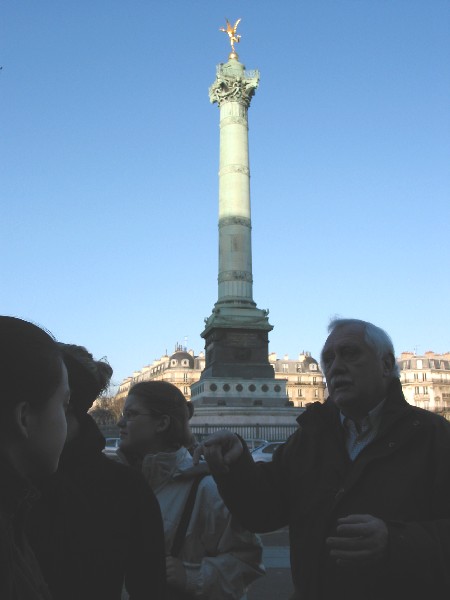 Bastille
Bastille
Place de la Bastille. 4e, 11e, 12e arr.
Métro : Bastille (1, 5, 8)
The Bastille was originally a fortress, built in the fourteenth century to protect Paris from eastern invaders. In the seventeenth century, the Bastille became a prison for upper class citizens who went against the king (or women whose husbands wanted them out of the way). During the great revolution of 1789, the Bastille was a major target due to its symbolism of the monarchy. In fact, the French Independence Day, July 14th, marks the day in 1789 when the revolutionaries took over the Bastille prison. Ever since that first revolution, the Bastille has been a center of French revolutions and strikes. After the Trois Glorieuses de la révolution de Juillet on July 27, 28, and 29, 1830, a large column was erected in the Bastille to commemorate the lives lost during that revolution. Finished in 1840, the colonne de Juillet is a 47 meter bronze column topped with the golden statue, Génie de la Liberté.
Prior to our cooking lesson, we met up with Jean-François ST and Annick M at the Bastille to start our shopping. According to Jean-François, the Bastille area was not a very nice neighborhood until the Opéra Bastille was inaugurated on the bicentennial of the French revolution. Since its inauguration, the area surrounding the Bastille has changed from low-rent housing to one of the trendiest places to live in Paris. There are art galleries and dance halls all over the surrounding streets. While we didn’t go to any of those, we did go to the market that occurs near the place de la Bastille every Thursday and Sunday. There were all types of vendors there; in addition to the expected food vendors selling fruits, vegetables, meat, seafood, or baked goods, there were other vendors with such varied wares as shoes, purses, children’s clothing, and scarves.

